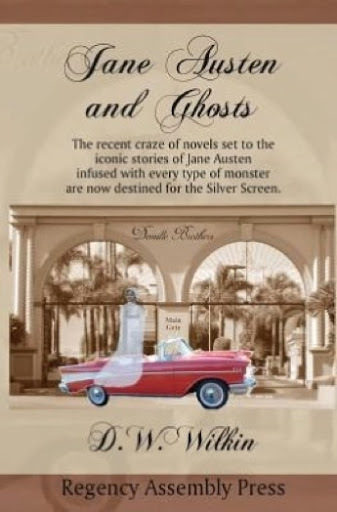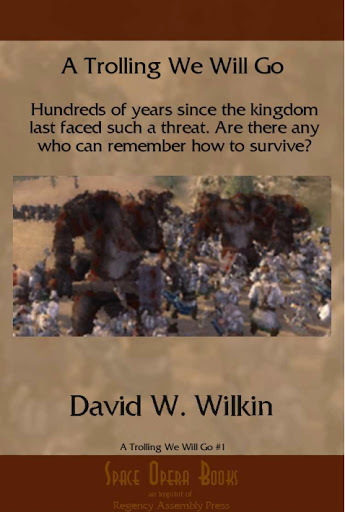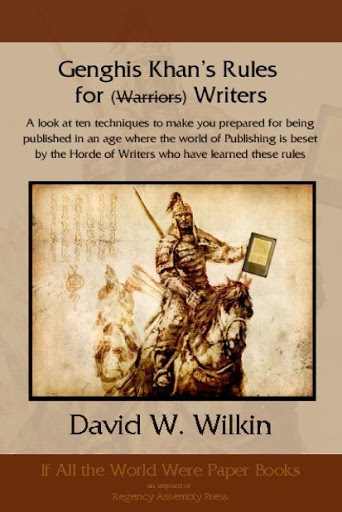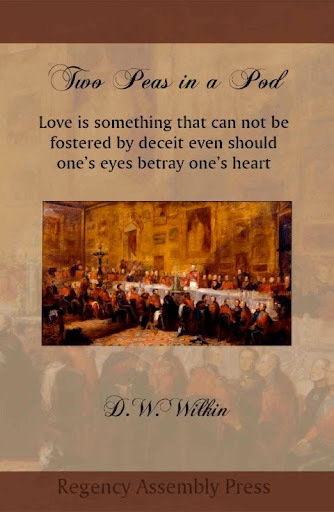D.W. Wilkin's Blog, page 33
August 19, 2016
Regency Personalities Series-Marylebone Cricket Club
Regency Personalities Series
In my attempts to provide us with the details of the Regency, today I continue with one of the many period notables.
Marylebone Cricket Club
1787-
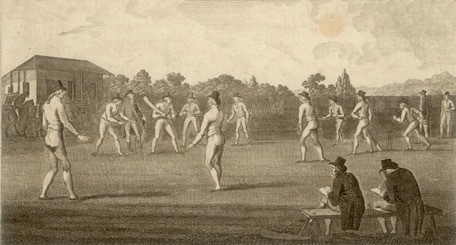
Marylebone Cricket Club
Marylebone Cricket Club-Popular tradition dates the founding of the MCC to 1787 when Thomas Lord opened the ground he bought on the site now occupied by Dorset Square which the club adopted as its home venue. In fact, the 1787-MCC was the reconstitution of a much older club that had its origins in the early 18th century, or possibly earlier. The former club has been referred to by names such as “The Noblemen’s and Gentlemen’s Club” or “The Cricket Club” and it was based for a long time at the Star and Garter on Pall Mall (#44-closed 1905). It was essentially a social and gambling club but had a number of sporting connections including the original London Cricket Club, the Jockey Club, Hambledon Club, the White Conduit Club and various prizefighting promotions.
When the members formed the White Conduit Club for cricket in the early 1780s they played at White Conduit Fields in Islington but they soon became dissatisfied with the surroundings and complained that the site was “too public”. The members asked Thomas Lord, a professional bowler at the White Conduit, to secure a more private venue within easy distance of London; they guaranteed him against any financial losses. When Lord opened his new ground, the gentlemen’s club moved there and initially renamed themselves as “the Mary-le-bone Club”.
MCC revised the Laws of Cricket in 1788 and continues to reissue them (from time to time), and remains the copyright holder.


Jane Austen Fans Rejoice, Jane is BACKKKK… Jane Austen and Ghosts
Special Sale Price!
Jane Austen and Ghosts.
Not only do I write Regency and Romance, but this can take a humorous turn. Some years back, I am sure readers of this blog will be aware that some writers began to take great liberty with Jane Austen and her works. Pride and Prejudice being liberally rewritten with the inclusion of zombies.
Then other books appeared with sea monsters, and werewolves and vampires. President Lincoln has even made it to the big screen where he is intent on sending foul creatures to hell. It occurred to me, even before I read any of this literature, that Jane would probably not appreciate what had been done to her classic piece.
That the tales and her life have become visual spectacles that we enjoy she might not like either, but is perhaps resigned to. That zombies, ghosts and vampires are now used to follow her own plot lines would I think, have her turning over in her grave. Jane Austen and Ghosts is my take on that.
It is now available in a variety of formats. For a limited time it has been reduced to $2.99 for your eReaders and $8.99 for paperback you can get this Jane Austen adventure.
Barnes and Noble for your Nook
and in Paperback
In the world of moviemaking, nothing is as golden as rebooting a classic tale that has made fortunes every time before when it has been adapted for the silver screen.
Certainly any work by Jane Austen made into a movie will not only be bankable, but also considered a work of art. That is of course until the current wave of adaptations that unite her classic stories with all the elements of the afterlife is attempted to be created.
That these have found success in the marketplace amongst booklovers may not be quite understood by those who make movies. But that they are a success is understood and a reason to make them into movies.
All that being said, perhaps it would also be fair to say that the very proper Jane, were she present to have anything to say about it, would not be pleased. Of course she has been away from this Earth for nearly 200 hundred years.
But does that mean were she upset enough, she wouldn’t come back?
Feedback
If you have any commentary, thoughts, ideas about the book (especially if you buy it, read it and like it
August 18, 2016
Regency Personalities Series-Colonel William Linnaeus Gardner
Regency Personalities Series
In my attempts to provide us with the details of the Regency, today I continue with one of the many period notables.
Colonel William Linnaeus Gardner
1770–1835
Colonel William Linnaeus Gardner was born to a prominent American Loyalist family in New York’s Hudson Valley. He was the eldest son of Major Valentine Gardner (born 1739 in Ireland), 16th Foot. His father Major Valentine Gardner was the elder brother of Alan Gardner, 1st Baron Gardner and was with the 16th Foot, during its service in America from 1767 to 1782. Gardner’s mother was his father’s first wife, Aleda (1747–1791), third daughter of Colonel Robert Livingston of Livingston Manor, New York (where he was born).
Gardner “… is mentioned as being cared for by his maternal grandfather at the… manor house for several years before it was judged prudent to send him to his father, with whom he ended up back in England – an involuntary intercontinental emigration in reverse.” Through his father, he had a younger half-brother, also named Valentine Gardner, whose mother his father later married. He was brought up in France and when a boy, was gazetted as ensign in the old 89th Foot on 7 March 1783 and placed on half-pay of the regiment on its disbandment some weeks later. He was brought on full-pay as ensign in the 74th Highlanders in India on 6 March 1789, and promoted to a lieutenancy in the 52nd Foot in India in October of the same year. The regimental muster-rolls, which are incomplete, show him on the strength of the depôt-company at home from 1791–93. He became captain in the 30th Foot in 1794 and at once exchanged to half-pay of a disbanded independent company. Of the circumstances under which he retired various stories were told. All that is known is that he appeared afterwards as a military adventurer in the “chaotic field of central Indian discord”.
For some time (starting in 1798), Gardner was in the service of Jeswunt Rao Holkar, the famous Maratha ruler of Indore. Holkar sent him on a mission to the independent princes of Cambay, where Gardner converted to Islam and married his only wife, an Indian Muslim princess (born c. 1775), on whose ancestors the emperors of Delhi, in days gone by, had conferred the highest hereditary honours.
Sources are conflicting on their date of marriage (with some citing marriage in 1788 when the Begum was 13 years old and others stating that they married in 1796). On seeing his future wife, Begum Mah Munzel ul-Nissa, for the first time, he stated: “… I saw, as I thought, the most beautiful black eyes in the world.” She was the daughter of the Nawab of Cambay and the adopted daughter of Akbar Shah II, the Mughal Emperor of India. On living at his wife’s estates at Khassgunge, he wrote in a letter to his cousin Edward: “At Khassgunge I anticipate very great happiness. I am fond of reading and I am fond of my garden and… have more relish in playing with [my] little brats than for the First Society in the World.” Together they had three children: two sons named Alan Hyde Gardner (whose younger daughter married a Mughal prince named Mirza Anjum Shikoh Bahadur) and James Valentine Gardner (who married a Mughal princess named Begum Mulka Humanee), as well as a daughter.
The memoirs of Fanny Parkes, a contemporary of Gardner’s who spent time with the family in February 1835, offers unique insight into the family’s multicultural daily life. Parkes writes of the household’s mix of Mughal and European traditions and practices. Parkes’ book Wanderings of a Pilgrim in search of the Pictureseque During four and twenty years in the East with revelations of Life in the Zenana (1850) was rediscovered and edited by William Dalrymple and published for contemporary audiences as Begums, Thugs & Englishmen, The Journals of Fanny Parkes (Penguin).
Holkar afterwards sent Gardner to meet with Lord Lake and suspecting treachery, grossly insulted him on his return. Gardner replied by attempting to cut down the Maharaja. Failing, he escaped in the confusion and went through a succession of the wildest adventures. At one time, when a prisoner of Amrit Rao, he was strapped to a gun under the threat of death unless he promised to fight against the English. At another time, he jumped down a precipice fifty feet deep into a stream to escape his guards. Eventually, he made his way into Lake’s camp in the guise of a grass-cutter (1804). His wife and her attendants were allowed to depart unharmed from Holkar’s camp through her family’s influence.
Gardner served as a leader of irregular horse (captain) under Lake and in the same capacity (lieutenant-colonel), performed services under Sir David Ochterlony in Kaman from 1814–15. In the latter connection, Gardner (whose name, like that of his father, is spelt ‘Gardiner’ in many army lists), has been confounded by some writers with the first British resident in Nepal, the Hon. Edward Gardiner, who was affiliated with the Bengal Civil Service (for reference see Debrett, Peerage, 1825, under ‘Blessington,’ and Dodwell and Miles, Lists of Bengal Civil Servants). He also rendered service under Ochterlony in the settlement of Rajputana from 1817–18. He was rewarded in 1822 with an unattached majority in the king’s service antedated to 25 September 1803.
The name of William Linnæus Gardner first appears in the East India Company army lists in January 1819, as a local lieutenant-colonel commanding a corps of irregular cavalry, afterwards described as Gardner’s Corps, as Gardner’s Local Horse and as the 2nd Local Horse. Gardner’s Horse, later the 2nd Lancers, became one of the most highly decorated regiments of the Indian Army, first seeing service in the Nepal Warf 1815 touphto e First World War.
Gardner was stationed at Kasganj in 1819, at Sagar in 1821, at Bareilly from 1821–23, at Arracan in 1825 and at Kasganj again from 1826–27. In January 1828, when the 2nd Local Horse was again at Bareilly, Gardner is described as on leave and his name does not again appear in either the British or Indian army lists. No further record of him exists at the India Office.
Gardner resided at Kasganj, North West Provinces (modern day Uttar Pradesh, India), which was his private property (Hunter, Gazetteer of India, under ‘Kásganj’). A skilled rider and swordsman in his prime, Gardner is described in his latter years as a “… tall, soldier-like old man, of very courteous and dignified manners and very kind to his ailing wife”.
Gardner died at Kasganj on 29 July 1835, aged 65. His Begum died a month after him (Parkes, vol. i.). His tomb, and that of his Begum and his son James, still stand in Kasganj today.


Space Opera Books Presents A Trolling We Will Go (Book #1)
A Trolling We Will Go
Not only do I write Regency and Romance, but I also have delved into Fantasy.
The Trolling series, (the first three are in print) is the story of a man, Humphrey. We meet him as he has left youth and become a man with a man’s responsibilities. We follow him in a series of stories that encompass the stages of life.
We see him when he starts his family, when he has older sons and the father son dynamic is tested. We see him when his children begin to marry and have children, and at the end of his life when those he has loved, and those who were his friends proceed him over the threshold into death.
All this while he serves a kingdom troubled by monsters. Troubles that he and his friends will learn to deal with and rectify.
It is now available in a variety of formats. For $.99 you can get this fantasy adventure.
Barnes and Noble for your Nook
The Valley Kingdom of Torahn had been at peace for fifty years since the Council of Twenty-One saw fit to dispense with their royal family.
The only Kingdom without a King on the west side of the continent. But late last year, something caused the Goblins in the Old Forest, Karasbahn to stir and act courageous.
Something that men can not remember seeing Goblins ever doing. What has gotten the Goblins in such a state?
Whatever it is, it can not be good news for Torahn. Or for Humphrey, a woodcutter for a small town, far from Karasbahn.
But part of the Kingdom’s militia, with no family or other exemptions. He is perfect to be sent to the Old Forest and find out what scares the Goblins that they have become fearless.
Feedback
If you have any commentary, thoughts, ideas about the book (especially if you buy it, read it and like it
August 17, 2016
Regency Personalities Series-Isabella Ingram-Seymour-Conway Marchioness of Hertford
Regency Personalities Series
In my attempts to provide us with the details of the Regency, today I continue with one of the many period notables.
Isabella Ingram-Seymour-Conway Marchioness of Hertford
1759 – 12 April 1834
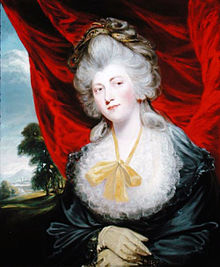
Isabella Ingram-Seymour-Conway
Isabella Ingram-Seymour-Conway Marchioness of Hertford was an English courtier and mistress of King George IV when he was Prince of Wales. She was a daughter of Charles Ingram, 9th Viscount of Irvine, and married Francis Seymour-Conway, the second Marquess of Hertford in 1776, at age sixteen.
Tall, handsome and elegant, she soon caught the attention of the Prince of Wales. His attentions were not welcomed by her husband, who took her to Ireland to keep her from the Prince. However, this only increased his passion for Lady Hertford, and she became George’s mistress in 1807. As a result, the Prince was a regular guest at Hertford House, Hertford’s London residence, and Ragley Hall in Warwickshire. A Tory herself, she was influential in turning the Prince toward the Tories, and used her London residence as the headquarters for Tory sympathizers.
On the death of her mother in 1807, she inherited Temple Newsam in West Yorkshire, where the Prince of Wales had paid her a visit. She and her husband added the name of Ingram to their surname due to the fortune they received.
Lady Hertford’s relationship with the Prince, now Prince Regent, ended in 1819, when he turned his attentions to Elizabeth Conyngham, Marchioness Conyngham. According to Greville’s diary for 9 June 1820:
“Somebody asked Lady Hertford if she had been aware of the King’s admiration for Lady Conyngham, and ‘whether he had ever talked to her about Lady C’. She replied that ‘intimately as she had known the King, and openly as he had always talked to her upon every subject, he had never ventured to speak to her upon that of his mistresses’.”
Lady Hertford died in 1834.


Rules for better writing from Genghis Khan
The Rules for Writers
Those who follow me for a long time know that I also write in other fields aside from Regency Romance and the historical novels I do.
A little while ago, before the end of 2011 and the 2011 NaNoWriMo, (where I wrote the first draft of another Regency) I started work on a project about writing.
The premise was what one should think about when starting and working on a project. I came up with 10 rules to follow in a quest to become a writer and tackle that novel.
Here are The 10 Rules:
1) Read like a writer
2) Have a good story
3) Your work will be Thematic
4) Plot: The seven deadly ones
5) Characters will carry your tale, near and far
6) Words are your warriors
7) Stories are structured
8) All tales building to a Crescendo
9) Genghis edits history, shouldn’t you as well
10) Act like a writer
So it is now released. For $4.99 you can get this treatise on honing your skills.
Barnes and Noble for your Nook
Genghis Khan came from the Steppes of Mongolia, a family torn apart by neighboring tribes, to unite those tribes, or defeat them, and then conquer the greater part of the known world. His heirs would continue his conquest right to the edge of western society. The world feared the Mongols, and Genghis. Now, you can benefit, as a writer from the lessons he has to impart on how, with the changing world of publishing, you can perfect your work and write not only good material for this new age of book publishing. But can write great work for this new age. 10 simple lessons, and you will be on your way to conquering the bookshelves of the 21st century. This short book will have you learning all you really need to know to elevate your writing to the next level. These simple lessons will start you on the road to better writing as a member of the Horde in no time.
Feedback
If you have any commentary, thoughts, ideas about the book (especially if you buy it, read it and like it
August 16, 2016
Regency Personalities Series-Sir Charles Henry Knowles
Regency Personalities Series
In my attempts to provide us with the details of the Regency, today I continue with one of the many period notables.
Sir Charles Henry Knowles
24 August 1754 – 28 November 1831
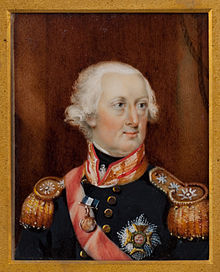
Charles Henry Knowles
Sir Charles Henry Knowles was born at Kingston, Jamaica on 24 August 1754, the second son of the Governor of Jamaica Admiral Sir Charles Knowles and his wife Maria Magdalena Theresa de Bouget. He received his initial education at Eton College circa 1764–6, and then subsequently at Glasgow and Edinburgh. He joined in navy in 1768 as a midshipman aboard the 36-gun frigate HMS Venus, which was then serving in the English Channel under the command of Captain Samuel Barrington. He was then aboard the Spithead guard ship the 74-gun HMS Lenox under Captain Robert Roddam, before joining the 32-gun HMS Southampton under Captain John MacBride, where he served at Plymouth and in the Channel.
Knowles was appointed as acting-lieutenant without pay aboard the sloop HMS Diligence by Sir George Brydges Rodney in 1773, and Knowles went on to serve in this capacity aboard HMS Princess Amelia, HMS Portland and HMS Guadeloupe under Captain William Cornwallis at Pensacola and from Jamaica. He then moved aboard Captain Collins’s 20-gun HMS Seaford where he served off Cap Francois and Santo Domingo. His next appointment was aboard Rear-Admiral Clark Gayton’s flagship, the 50-gun HMS Antelope at Port Royal from 1774 to May 1776, from which he moved aboard the 20-gun HMS Squirrel under Captain Stair Douglas. Under Douglas Knowles served at Jamaica, the Mosquito Shore and the Bay of Honduras.
Knowles’s commission was confirmed on 28 May 1776 and he was appointed as second lieutenant of the 28-gun HMS Boreas, then under the command of Captain Charles Thompson. He served aboard the Boreas at Port Royal, and later on the North American Station at New York after the Battle of Bunker Hill. He was promoted to first lieutenant and in 1776 moved aboard the 50-gun HMS Chatham, which was at that time the flagship of Vice-Admiral Molyneux Shuldham. He went on to see service on the flat boats at New York and Rhode Island.
Knowles returned to Britain aboard HMS Asia in January 1777 to see his father, who was in declining health. Whilst at home he took the opportunity to prepare his first signal book, A Set of Signals for a Fleet on a Plan Entirely New, for publication, before returning to the Americas in summer 1777. The book, published that year, proposed innovative new ways of flying numbered signals, and the development of tactics whereby the traditional line of battle would be abandoned once the battle began. Knowles claimed to have communicated the work to Lord Howe, and that Howe’s tactics at the Glorious First of June reflected Knowles’s theories on effective naval tactics. The death of his father on 9 December that year and his succession as the second baronet caused Knowles to return to England again.
He returned to active service again during the summer of 1778, and was present with Barrington’s fleet at the Battle of St. Lucia on 15 December 1778, serving aboard Commander James Richard Dacres’s 18-gun HMS Ceres. Two days later the Ceres was chased and captured by a squadron under the comte d’Estaing. He was exchanged and appointed to serve as lieutenant aboard Vice-Admiral Barrington’s flagship, the 74-gun HMS Prince of Wales. In May 1779 he was briefly ordered to be master and commander of the storeship HMS Supply, but had returned to the Prince of Wales by 6 July, when he took part and was wounded in the Battle of Grenada. Knowles returned to England with Barrington in October 1779, and by December had joined Admiral Sir George Rodney’s flagship, the 90-gun HMS Sandwich, as a volunteer for the Relief of Gibraltar.
Rodney appointed him to command the 18-gun xebec HMS Minorca on 26 January 1780, quickly following this with a promotion to post-captain and an appointment to the 24-gun HMS Porcupine on 2 February. Knowles went on to serve in a highly active role in the defence of British trade in the Mediterranean, engaging privateers and escorting convoys. At one point he was briefly blockaded in Minorca, where he fell ill. He was eventually able to escape to sea in January 1781, and was based out of Gibraltar until his return to England in April 1782. On his arrival he was accused of piracy and murder, but was able to clear his name, returning to Gibraltar aboard HMS Britannia to resume command of the Porcupine. He became senior naval officer there on the departure of Sir Roger Curtis, until returning to England once more in command of the 74-gun Spanish prize HMS San Miguel.
The end of the war allowed Knowles to continue with his studies, and he made a tour of France in 1788. The outbreak of the French Revolutionary Wars in 1793 led to Knowles returning to active service in command of the 32-gun frigate HMS Daedalus. He was ordered to Halifax, but given permission to move to the Chesapeake, where a French convoy was planning to sail from. Problems with manning his ship meant that Knowles sailed from Portsmouth with a largely inexperienced crew, but Knowles was able to have them fully trained by the time of their arrival at Hampton Roads. Shortly after his arrival, the French escort arrived, and the convoy sailed shortly afterwards, observed by Knowles on the Daedalus. Knowles passed this latest information on to Lord Howe, who moved his Channel fleet to intercept it, setting in motion the events that would lead to the Glorious First of June. Having fulfilled his objective Knowles sailed to Halifax, and from there returned to England. He was appointed to the 74-gun HMS Edgar and served in the North Sea. Once again Knowles was beset by difficulties in manning his ship, the Edgar put to sea from the Nore manned by soldiers from 23 different regiments, and commanded by officers from still other regiments. Typhus and ‘the itch’ were rampant, on the ship’s return to port she had to be scrubbed with lime water and fumigated with vinegar, while 100 men were discharged to the hospital. Knowles suffered a further mishap when the Edgar was dismasted in a storm off the Texel, and had to be towed back to the Nore.
Knowles transferred to the 74-gun HMS Goliath in late 1795, serving under Sir John Jervis at Lisbon. While serving there he ran foul of Jervis, who had him court-martialled in 1796 on a charge of disobeying a verbal order. At the trial Jervis’s captain of the fleet Robert Calder swore that no order had been given, and the lieutenant who was supposed to have transmitted it swore he had not received one. The charge was therefore dismissed, but this appears to have been the start of a personal enmity of Jervis against Knowles.
Knowles was still in Jervis’s fleet in command of Goliath when the Battle of Cape St Vincent was fought on 14 February 1797. During the engagement Jervis ordered his ships to tack in succession whilst in close action with the enemy. Knowles did so, coming under heavy fire and was forced to temporarily drop out of the action while the Goliath‘ knotted and spliced their rigging. On his return to the battle, Knowles observed an opportunity to pass to windward of the Santísima Trinidad and so becalm her. Jervis however signalled Goliath and ordered Knowles to stop the manoeuvre. The following morning both Knowles on the Goliath, and James Whitshed on HMS Namur had observed the vulnerable situation that the Santísima Trinidad was in, and attempted to signal this to Jervis. They received no reply.
The fleet anchored in Lagos Bay the following day, with Knowles placing the Goliath where she could provide flanking cover for the line. On going aboard Jervis’s flagship HMS Victory he was however told by Jervis that the Goliath was vulnerable where she lay. Knowles replied that the Spanish were hardly likely to attack given their condition. While Knowles was dining with Vice-Admiral William Waldegrave that evening, Jervis sent the Victory‘s master to move Goliath, a great insult to Knowles. Jervis also ordered him to swap ships with Thomas Foley and take over HMS Britannia. Knowles soon returned to England after this, citing poor health.
Knowles attended the service of thanksgiving at St Paul’s Cathedral on 19 December 1797 for the victories at St Vincent and Camperdown, receiving a Naval Gold Medal, and then largely retired from public life. He spent the rest of his life in study, producing seven books of professional studies and a new code of signals in 1798, based on his 1777 work and incorporating revisions he had made in 1780, 1787 and 1794. He was promoted to Rear-Admiral on 14 February 1799, two years to the day after the Battle of Cape St Vincent, a Vice-Admiral on 24 April 1804 and a full Admiral on 31 July 1810. He suggested using balloons to observe the French invasion forces at Brest in 1803, and in 1830 he published his largely autobiographical work Observations on Naval Tactics.
He had married Charlotte Johnstone on 10 September 1800, the couple eventually having three sons and four daughters. He was nominated a Knight Grand Cross of the Order of the Bath on 16 May 1820 at the accession of King George IV. Admiral Charles Henry Knowles died on 28 November 1831 at the age of 77. He was succeeded as baronet by his son Francis Charles Knowles.


An Unofficial Guide to how to win the Scenarios of Rollercoaster Tycoon 3
An Unofficial Guide to how to win the Scenarios of Rollercoaster Tycoon 3
I have been a fan of this series of computer games since early in its release of the very first game. That game was done by one programmer, Chris Sawyer, and it was the first I recall of an internet hit. Websites were put up in dedication to this game where people showed off their creations, based on real amusement parks. These sites were funded by individuals, an expense that was not necessarily as cheap then as it is now. Nor as easy to program then as it might be to build a web page now.
Prima Books released game guides for each iteration of the game, Rollercoaster Tycoon 1, Rollercoaster Tycoon 2 and Rollercoaster Tycoon 3 (RCT3) but not for the expansion sets. And unlike the first two works, the third guide was riddle with incorrect solutions. As I played the game that frustrated me. And I took to the forums that Atari, the game publisher hosted to see if I could find a way to solve those scenarios that the Prima Guide had written up in error. Not finding any good advice, I created my own for the scenarios that the “Official” Guide had gotten wrong.
Solutions that if you followed my advice you would win the scenario and move on. But if you followed the
“Official” version you would fail and not be able to complete the game. My style and format being different than the folks at Prima, I continued for all the Scenarios that they had gotten right as well, though my solutions cut to the chase and got you to the winner’s circle more quickly, more directly.
My contributions to the “Official” Forum, got me a place as a playtester for both expansions to the game, Soaked and Wild. And for each of these games, I wrote the guides during the play testing phase so all the play testers could solve the scenarios, and then once again after the official release to make changes in the formula in case our aiding to perfect the game had changed matters. For this, Atari and Frontier (the actual programmers of the game) placed me within the game itself.
And for the longest time, these have been free at the “Official” Forums, as well as my own website dedicated to the game. But a short time ago, I noticed that Atari, after one of its bankruptcies had deleted their forums. So now I am releasing the Guide for one and all. I have added new material and it is near 100 pages, just for the first of the three games. It is available for the Kindle at present for $2.99.
(Click on the picture to purchase)
Not only are all 18 Scenarios covered, but there are sections covering every Cheat Code, Custom Scenery, the famous Small Park Competition, the Advanced Fireworks Editor, the Flying Camera Route Editor which are all the techniques every amusement park designer needs to make a fantastic park in Rollercoaster Tycoon 3.
Scenarios for RCT 3
1) Vanilla Hills
2) Goldrush
3) Checkered Flag
4) Box Office
5) Fright Night
6) Go With The Flow
7) Broom Lake
8) Valley of Kings
9) Gunslinger
10) Ghost Town
11) National Treasure
12) New Blood
13) Island Hopping
14) Cosmic Crags
15) La La Land
16) Mountain Rescue
17) The Money Pit
18) Paradise Island


August 15, 2016
Regency Personalities Series-David William Murray 3rd Earl of Mansfield
Regency Personalities Series
In my attempts to provide us with the details of the Regency, today I continue with one of the many period notables.
David William Murray 3rd Earl of Mansfield
5 February 1770 – 22 December 1815
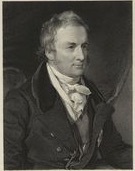
David William Murray
David William Murray 3rd Earl of Mansfield was born in Paris in 1777 to David Murray, then 7th Viscount Stormont, and Louisa, daughter of Charles Cathcart, 9th Lord Cathcart. In 1792 Murray’s father succeeded to his uncle William Murray’s 1792 creation of the Mansfield earldom; David William himself succeeded in 1796.
On 16 September 1797 Mansfield married Frederica, daughter of William Markham, Archbishop of York. They had nine children:
Lady Frederica Louisa Murray (1800–1823), married James Hamilton Stanhope in 1823 and had issue
Lady Elizabeth Anne Murray (born 1803), unmarried
Lady Caroline Murray (born 1805), unmarried
William David (1806–1898), who succeeded as 4th Earl of Mansfield and married Louisa, third daughter of Cutbbert Ellison, in 1829 and had issue
Lady Georgina Catherine Murray (born 1807)
Honourable Charles John Murray (born 1810), married Frances Elizabeth, second surviving daughter of Thomas Anson, 1st Viscount Anson in 1835
Honourable David Henry Murray (born 1811), Captain in the Scots Fusilier Guards
Lady Cecilia Sarah Murray (1814–1830)
Lady Emily Murray (1816-1902), married Francis Seymour, later 5th Marquess of Hertford, in 1839 and had issue
He received a degree, Doctor of Civil Law, from Christ Church, Oxford in 1793. He joined the army, becoming a colonel in the Eastern Regiment of the Middlesex Militia in 1798 and the Perthshire Regiment of the North British Militia in 1803.
Mansfield served as Lord Lieutenant of Clackmannanshire from 1803 until his death.
In 1835 Mansfield was elected a Knight of the Order of the Thistle. He was also a Fellow of the Royal Society (elected 1802) and a Fellow of the Society of Antiquaries of London.
Mansfield died at Leamington on 18 February 1840. He is buried in St Andrew’s Churchyard, Kingsbury, London


Two Peas in A Pod, A Regency Romance
Two Peas in a Pod has now passed the exclusivity to Amazon test and is available in wider release, electronically (digitally) for other readers now. We sold a few copies on Amazon but nothing to warrant an exclusivity period. Amazon is too big and too full of itself.
Two Peas in a Pod is still available as a Trade paperback click here to order Regency Assembly Press.
$3.99 for an electronic copy. The Trade Paperback, due to publishing costs and the cut that Amazon takes continue to see a Trade Paperback costing $15.99 (The much hyped royalties that we writers are supposed to get is nowhere near what the news reports say. Most of that price is taken by Amazon.)
iBookstore (These are my books
and still at Amazon
Here is a picture, which of course you can click on to go fetch the book:
Love is something that can not be fostered by deceit even should one’s eyes betray one’s heart.
Two brothers that are so close in appearance that only a handful have ever been able to tell them apart. The Earl of Kent, Percival Francis Michael Coldwell is only older than his brother, Peregrine Maxim Frederick Coldwell by 17 minutes. They may have looked as each other, but that masked how they were truthfully quite opposite to one another.
For Percy, his personality was one that he was quite comfortable with and more than happy to let Perry be of a serious nature. At least until he met Veronica Hamilton, the daughter of Baron Hamilton of Leith. She was only interested in a man who was serious.
Once more, Peregrine is obliged to help his older brother by taking his place, that the Earl may woo the young lady who has captured his heart. That is, until there is one who captures Peregrine’s heart as well.
There is a visual guide to Two Peas in a Pod 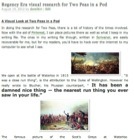 as well at Pinterest and a blog post here.
as well at Pinterest and a blog post here.



